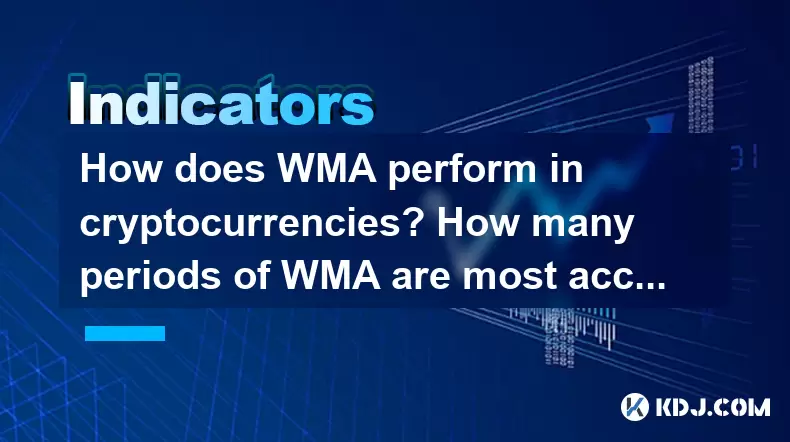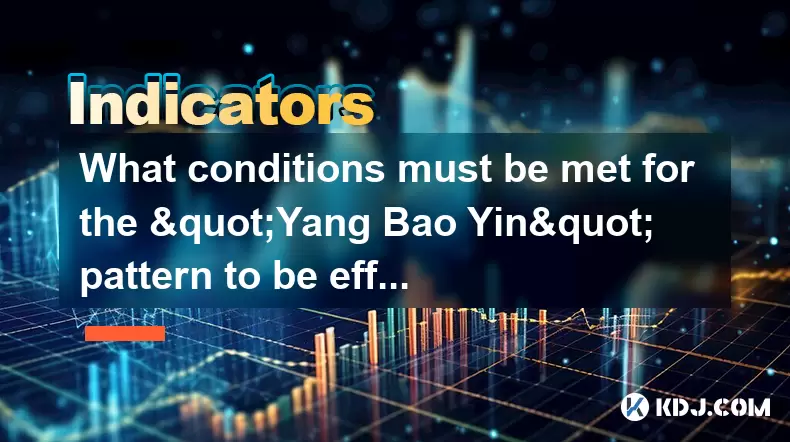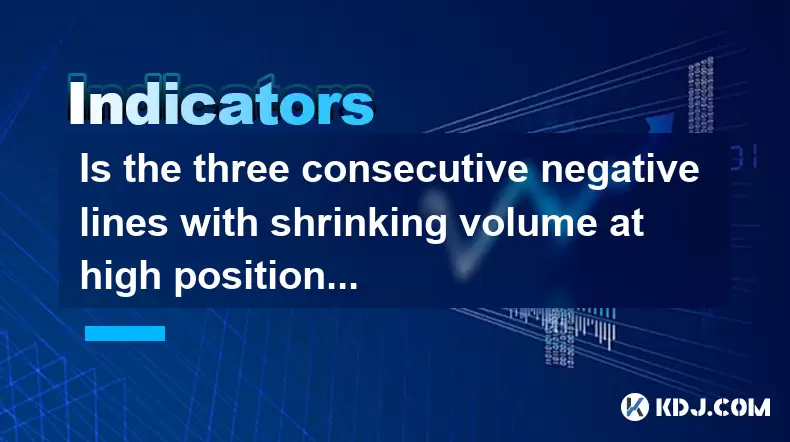-
 Bitcoin
Bitcoin $105,606.4998
2.12% -
 Ethereum
Ethereum $2,561.4949
2.56% -
 Tether USDt
Tether USDt $1.0005
0.02% -
 XRP
XRP $2.1391
1.37% -
 BNB
BNB $653.4842
1.53% -
 Solana
Solana $147.2910
2.31% -
 USDC
USDC $0.9998
0.00% -
 Dogecoin
Dogecoin $0.1784
3.78% -
 TRON
TRON $0.2701
0.73% -
 Cardano
Cardano $0.6377
1.74% -
 Hyperliquid
Hyperliquid $42.0282
10.58% -
 Sui
Sui $3.0423
2.91% -
 Bitcoin Cash
Bitcoin Cash $444.4445
9.93% -
 Chainlink
Chainlink $13.3183
2.77% -
 UNUS SED LEO
UNUS SED LEO $9.0217
0.56% -
 Avalanche
Avalanche $19.2345
1.38% -
 Stellar
Stellar $0.2589
1.12% -
 Toncoin
Toncoin $3.0082
2.59% -
 Shiba Inu
Shiba Inu $0.0...01207
4.35% -
 Hedera
Hedera $0.1577
3.59% -
 Litecoin
Litecoin $85.8538
4.24% -
 Polkadot
Polkadot $3.8194
2.66% -
 Ethena USDe
Ethena USDe $1.0004
-0.01% -
 Monero
Monero $307.9327
1.29% -
 Dai
Dai $0.9999
0.02% -
 Bitget Token
Bitget Token $4.5422
1.82% -
 Uniswap
Uniswap $7.5634
9.74% -
 Pepe
Pepe $0.0...01117
5.05% -
 Aave
Aave $289.0564
6.25% -
 Pi
Pi $0.5818
6.50%
How does WMA perform in cryptocurrencies? How many periods of WMA are most accurate for Bitcoin?
WMA, effective for short-term trends in crypto, uses 5-10 periods for Bitcoin day trading, while 100-200 periods suit long-term investors, but it's not foolproof and should be used with other indicators.
Jun 09, 2025 at 10:42 am

The Weighted Moving Average (WMA) is a popular technical indicator used in the cryptocurrency market to analyze price trends and make informed trading decisions. In this article, we will delve into the performance of WMA in cryptocurrencies and explore the most accurate number of periods for Bitcoin.
Understanding WMA in Cryptocurrencies
WMA, or Weighted Moving Average, is a type of moving average that assigns different weights to the data points within the selected period. Unlike the Simple Moving Average (SMA), which gives equal weight to all data points, WMA gives more importance to recent prices, making it more responsive to recent price changes.
In the context of cryptocurrencies, WMA is used to smooth out price fluctuations and identify potential trends. Traders often use WMA to determine entry and exit points for their trades, as well as to confirm the strength of a trend.
How WMA Performs in Cryptocurrencies
The performance of WMA in cryptocurrencies can vary depending on market conditions and the specific cryptocurrency being analyzed. However, there are some general observations about how WMA performs in the crypto market.
WMA can be effective in identifying short-term trends in cryptocurrencies. Due to its emphasis on recent prices, WMA can quickly adapt to sudden price movements, making it suitable for traders who focus on short-term trading strategies.
WMA can also be useful in confirming long-term trends. By using a longer period for the WMA calculation, traders can get a better understanding of the overall direction of the market. This can help them make more informed decisions about their long-term investment strategies.
However, it's important to note that WMA, like any technical indicator, is not foolproof. It can generate false signals, especially in highly volatile markets like cryptocurrencies. Therefore, it's crucial for traders to use WMA in conjunction with other indicators and analysis techniques to increase the accuracy of their trading decisions.
Determining the Most Accurate Periods for Bitcoin
When it comes to determining the most accurate number of periods for WMA in Bitcoin, there is no one-size-fits-all answer. The optimal number of periods can vary depending on the trader's strategy, risk tolerance, and market conditions. However, some common periods used for Bitcoin WMA analysis include:
- Short-term WMA: 5-10 periods
- Medium-term WMA: 20-50 periods
- Long-term WMA: 100-200 periods
Short-term WMA with 5-10 periods is often used by day traders and scalpers who focus on short-term price movements. This WMA setting is highly responsive to recent price changes, making it suitable for identifying short-term trading opportunities.
Medium-term WMA with 20-50 periods is commonly used by swing traders who aim to capture medium-term price trends. This setting provides a balance between responsiveness and smoothing out short-term fluctuations, making it useful for identifying potential entry and exit points for swing trades.
Long-term WMA with 100-200 periods is typically used by long-term investors who focus on the overall direction of the market. This setting provides a more smoothed-out view of the price trend, helping investors make informed decisions about their long-term investment strategies.
How to Calculate WMA for Bitcoin
Calculating WMA for Bitcoin involves a few steps. Here's how you can do it manually:
- Choose the number of periods you want to use for your WMA calculation. For example, let's use 10 periods.
- Assign weights to each period, with the most recent period having the highest weight. The weights should add up to the total number of periods. For 10 periods, the weights could be: 10, 9, 8, 7, 6, 5, 4, 3, 2, 1.
- Multiply each period's closing price by its corresponding weight. For example, if the closing prices for the last 10 periods are: 30000, 31000, 32000, 33000, 34000, 35000, 36000, 37000, 38000, 39000, the weighted prices would be: 300000, 279000, 256000, 231000, 204000, 175000, 144000, 111000, 76000, 39000.
- Sum up the weighted prices and divide by the total number of periods (10 in this case). The sum of the weighted prices is 1,815,000, so the WMA would be 1,815,000 / 10 = 181,500.
Most trading platforms and charting tools provide built-in WMA indicators, so you don't need to perform these calculations manually. However, understanding the calculation process can help you better interpret the WMA values and make more informed trading decisions.
Using WMA in Bitcoin Trading Strategies
WMA can be incorporated into various Bitcoin trading strategies. Here are a few examples:
WMA Crossover Strategy: This strategy involves using two WMAs with different periods (e.g., a short-term WMA of 5 periods and a long-term WMA of 20 periods). When the short-term WMA crosses above the long-term WMA, it may signal a potential bullish trend, and traders may consider entering a long position. Conversely, when the short-term WMA crosses below the long-term WMA, it may indicate a potential bearish trend, and traders may consider entering a short position.
WMA Support and Resistance Strategy: Traders can use WMA as a dynamic support or resistance level. When the price of Bitcoin approaches the WMA from below, the WMA may act as a resistance level, and traders may consider selling or taking profits. Conversely, when the price approaches the WMA from above, it may act as a support level, and traders may consider buying or adding to their positions.
WMA Trend Confirmation Strategy: Traders can use WMA to confirm the direction of the overall trend. If the price of Bitcoin is consistently trading above the WMA, it may indicate a bullish trend, and traders may consider maintaining or adding to their long positions. Conversely, if the price is consistently trading below the WMA, it may suggest a bearish trend, and traders may consider maintaining or adding to their short positions.
Limitations and Considerations
While WMA can be a valuable tool for analyzing Bitcoin price trends, it's important to be aware of its limitations and consider the following factors:
Lag: Like all moving averages, WMA is a lagging indicator, meaning it may not always provide timely signals for entering or exiting trades.
Volatility: Cryptocurrencies, including Bitcoin, can experience high levels of volatility, which can lead to false signals generated by WMA.
Market Conditions: The effectiveness of WMA can vary depending on market conditions. During strong trending markets, WMA may provide more reliable signals, while in choppy or sideways markets, it may generate more false signals.
Confirmation: To increase the accuracy of WMA signals, it's advisable to use WMA in conjunction with other technical indicators, such as the Relative Strength Index (RSI) or the Moving Average Convergence Divergence (MACD).
Frequently Asked Questions
Q: Can WMA be used for other cryptocurrencies besides Bitcoin?
A: Yes, WMA can be applied to any cryptocurrency. The principles and calculations remain the same, but the optimal number of periods may vary depending on the specific cryptocurrency and its market characteristics.
Q: How often should I update my WMA calculations?
A: The frequency of updating WMA calculations depends on your trading strategy and time frame. For short-term traders, updating WMA on a daily or even hourly basis may be appropriate, while long-term investors may update WMA on a weekly or monthly basis.
Q: Can WMA be used for predicting cryptocurrency prices?
A: WMA is not a predictive tool but rather an indicator that helps identify trends and potential trading opportunities based on historical price data. While it can provide insights into market direction, it cannot predict future prices with certainty.
Q: Is WMA more effective than other moving averages for Bitcoin analysis?
A: The effectiveness of WMA compared to other moving averages, such as SMA or Exponential Moving Average (EMA), can vary depending on the trader's strategy and market conditions. WMA's emphasis on recent prices makes it more responsive to short-term changes, while SMA provides a more smoothed-out view, and EMA gives more weight to recent prices but with a different weighting scheme. Traders often use a combination of different moving averages to gain a more comprehensive understanding of the market.
Disclaimer:info@kdj.com
The information provided is not trading advice. kdj.com does not assume any responsibility for any investments made based on the information provided in this article. Cryptocurrencies are highly volatile and it is highly recommended that you invest with caution after thorough research!
If you believe that the content used on this website infringes your copyright, please contact us immediately (info@kdj.com) and we will delete it promptly.
- Shiba Inu (SHIB) token burn portal is live on Shibarium
- 2025-06-14 10:14:09
- Solana (SOL) price up 4.3% as open interest nears all-time highs, spot ETF approval odds jump to 91%
- 2025-06-14 10:14:09
- Tokenization platform Ondo Finance launches OUSG tokens on XRP Ledger
- 2025-06-14 10:01:31
- Shiba Inu vs. Neo Pepe Protocol: The Meme Coin Showdown of 2025
- 2025-06-14 10:01:31
- Bitcoin Continues to Dominate the Crypto Market in 2024, Reaching New Milestones
- 2025-06-14 09:55:12
- PayPal USD (PYUSD) Plans to Use Stellar for New Use Cases
- 2025-06-14 09:55:12
Related knowledge

How to calculate the probability of trend continuation after the MACD column divergence?
Jun 14,2025 at 08:01am
Understanding MACD Column DivergenceThe Moving Average Convergence Divergence (MACD) is a widely used technical indicator in cryptocurrency trading. The MACD column, also known as the histogram, represents the difference between the MACD line and the signal line. When price makes a new high or low but the MACD histogram does not confirm this movement, a...

What are the volume requirements for adjusting the K line in the "rising three methods" pattern?
Jun 14,2025 at 07:50am
Understanding the 'Rising Three Methods' Pattern in Cryptocurrency TradingThe 'rising three methods' pattern is a bullish continuation candlestick formation that traders often use to identify potential upward momentum in cryptocurrency price charts. This pattern typically appears during an uptrend and suggests that the trend is likely to continue after ...

What conditions must be met for the "Yang Bao Yin" pattern to be effective?
Jun 14,2025 at 06:42am
Understanding the 'Yang Bao Yin' Pattern in Cryptocurrency TradingThe Yang Bao Yin pattern is a candlestick formation commonly observed in technical analysis within the cryptocurrency market. This pattern typically signals a potential bullish reversal after a downtrend. However, for this pattern to be effective and reliable, certain conditions must be m...

Is the three consecutive negative lines with shrinking volume at high positions a signal that the main force has finished shipping?
Jun 14,2025 at 09:56am
Understanding the Concept of Three Consecutive Negative LinesIn cryptocurrency trading, three consecutive negative lines refer to a situation where an asset's price chart shows three successive candlesticks with closing prices lower than their opening prices. This pattern typically indicates bearish sentiment in the market. When this occurs at high posi...

Is it an opportunity for the long positive line with large volume to break through the platform and then shrink back?
Jun 14,2025 at 04:42am
Understanding the Long Positive Line with Large VolumeIn technical analysis, a long positive line refers to a candlestick pattern where the closing price is significantly higher than the opening price, often indicating strong buying pressure. When this occurs alongside large volume, it suggests that market participants are actively involved in pushing t...

How to grasp the 60-minute KD oversold + 15-minute bottom divergence?
Jun 14,2025 at 06:15am
Understanding the 60-Minute KD Oversold SignalThe KD indicator, also known as the Stochastic Oscillator, is a momentum oscillator that compares a particular closing price of a cryptocurrency to its price range over a given time period. When analyzing 60-minute charts, traders often look for oversold conditions in the KD line, which typically occur when ...

How to calculate the probability of trend continuation after the MACD column divergence?
Jun 14,2025 at 08:01am
Understanding MACD Column DivergenceThe Moving Average Convergence Divergence (MACD) is a widely used technical indicator in cryptocurrency trading. The MACD column, also known as the histogram, represents the difference between the MACD line and the signal line. When price makes a new high or low but the MACD histogram does not confirm this movement, a...

What are the volume requirements for adjusting the K line in the "rising three methods" pattern?
Jun 14,2025 at 07:50am
Understanding the 'Rising Three Methods' Pattern in Cryptocurrency TradingThe 'rising three methods' pattern is a bullish continuation candlestick formation that traders often use to identify potential upward momentum in cryptocurrency price charts. This pattern typically appears during an uptrend and suggests that the trend is likely to continue after ...

What conditions must be met for the "Yang Bao Yin" pattern to be effective?
Jun 14,2025 at 06:42am
Understanding the 'Yang Bao Yin' Pattern in Cryptocurrency TradingThe Yang Bao Yin pattern is a candlestick formation commonly observed in technical analysis within the cryptocurrency market. This pattern typically signals a potential bullish reversal after a downtrend. However, for this pattern to be effective and reliable, certain conditions must be m...

Is the three consecutive negative lines with shrinking volume at high positions a signal that the main force has finished shipping?
Jun 14,2025 at 09:56am
Understanding the Concept of Three Consecutive Negative LinesIn cryptocurrency trading, three consecutive negative lines refer to a situation where an asset's price chart shows three successive candlesticks with closing prices lower than their opening prices. This pattern typically indicates bearish sentiment in the market. When this occurs at high posi...

Is it an opportunity for the long positive line with large volume to break through the platform and then shrink back?
Jun 14,2025 at 04:42am
Understanding the Long Positive Line with Large VolumeIn technical analysis, a long positive line refers to a candlestick pattern where the closing price is significantly higher than the opening price, often indicating strong buying pressure. When this occurs alongside large volume, it suggests that market participants are actively involved in pushing t...

How to grasp the 60-minute KD oversold + 15-minute bottom divergence?
Jun 14,2025 at 06:15am
Understanding the 60-Minute KD Oversold SignalThe KD indicator, also known as the Stochastic Oscillator, is a momentum oscillator that compares a particular closing price of a cryptocurrency to its price range over a given time period. When analyzing 60-minute charts, traders often look for oversold conditions in the KD line, which typically occur when ...
See all articles

























































































